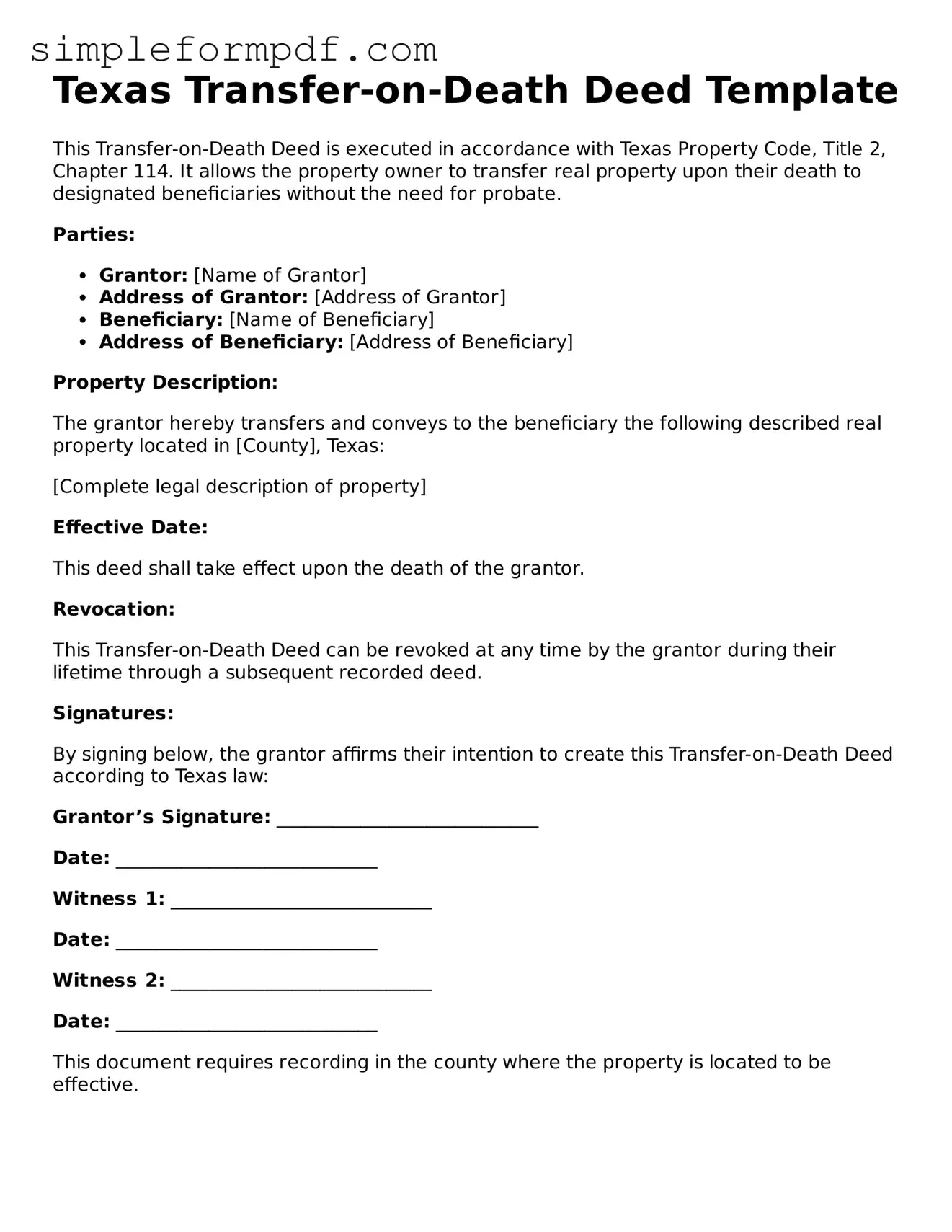Texas Transfer-on-Death Deed Template
This Transfer-on-Death Deed is executed in accordance with Texas Property Code, Title 2, Chapter 114. It allows the property owner to transfer real property upon their death to designated beneficiaries without the need for probate.
Parties:
- Grantor: [Name of Grantor]
- Address of Grantor: [Address of Grantor]
- Beneficiary: [Name of Beneficiary]
- Address of Beneficiary: [Address of Beneficiary]
Property Description:
The grantor hereby transfers and conveys to the beneficiary the following described real property located in [County], Texas:
[Complete legal description of property]
Effective Date:
This deed shall take effect upon the death of the grantor.
Revocation:
This Transfer-on-Death Deed can be revoked at any time by the grantor during their lifetime through a subsequent recorded deed.
Signatures:
By signing below, the grantor affirms their intention to create this Transfer-on-Death Deed according to Texas law:
Grantor’s Signature: ____________________________
Date: ____________________________
Witness 1: ____________________________
Date: ____________________________
Witness 2: ____________________________
Date: ____________________________
This document requires recording in the county where the property is located to be effective.
